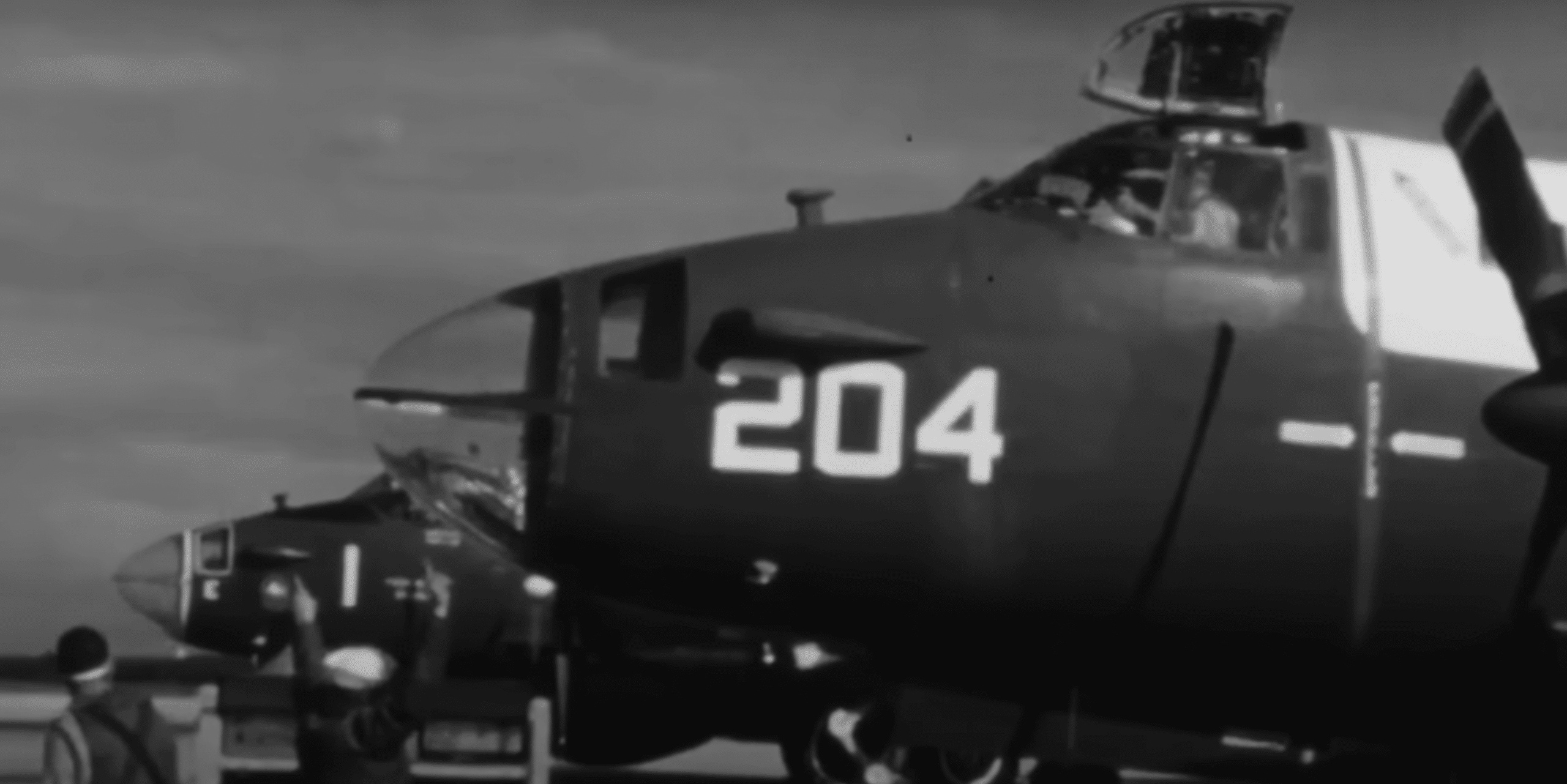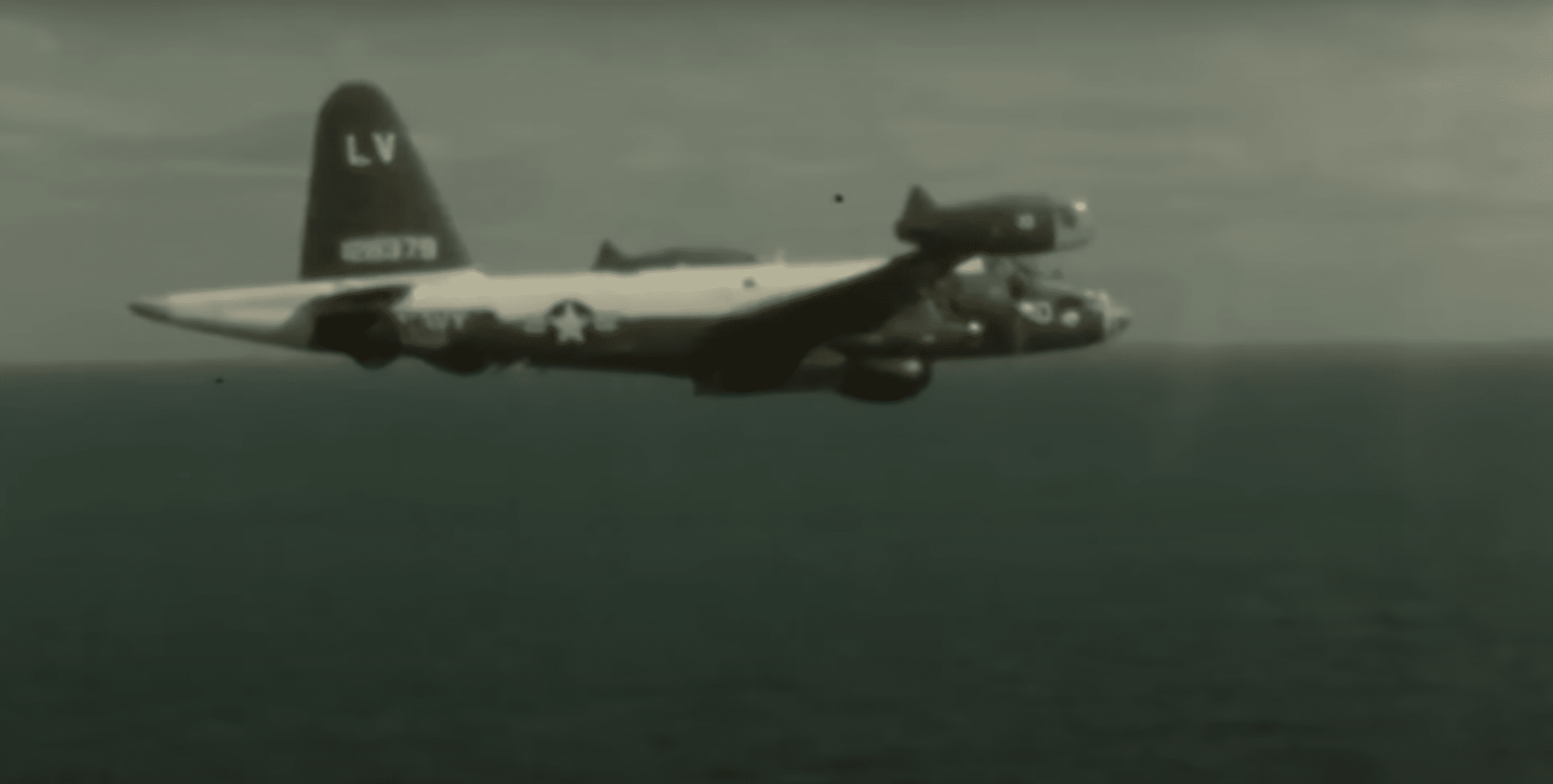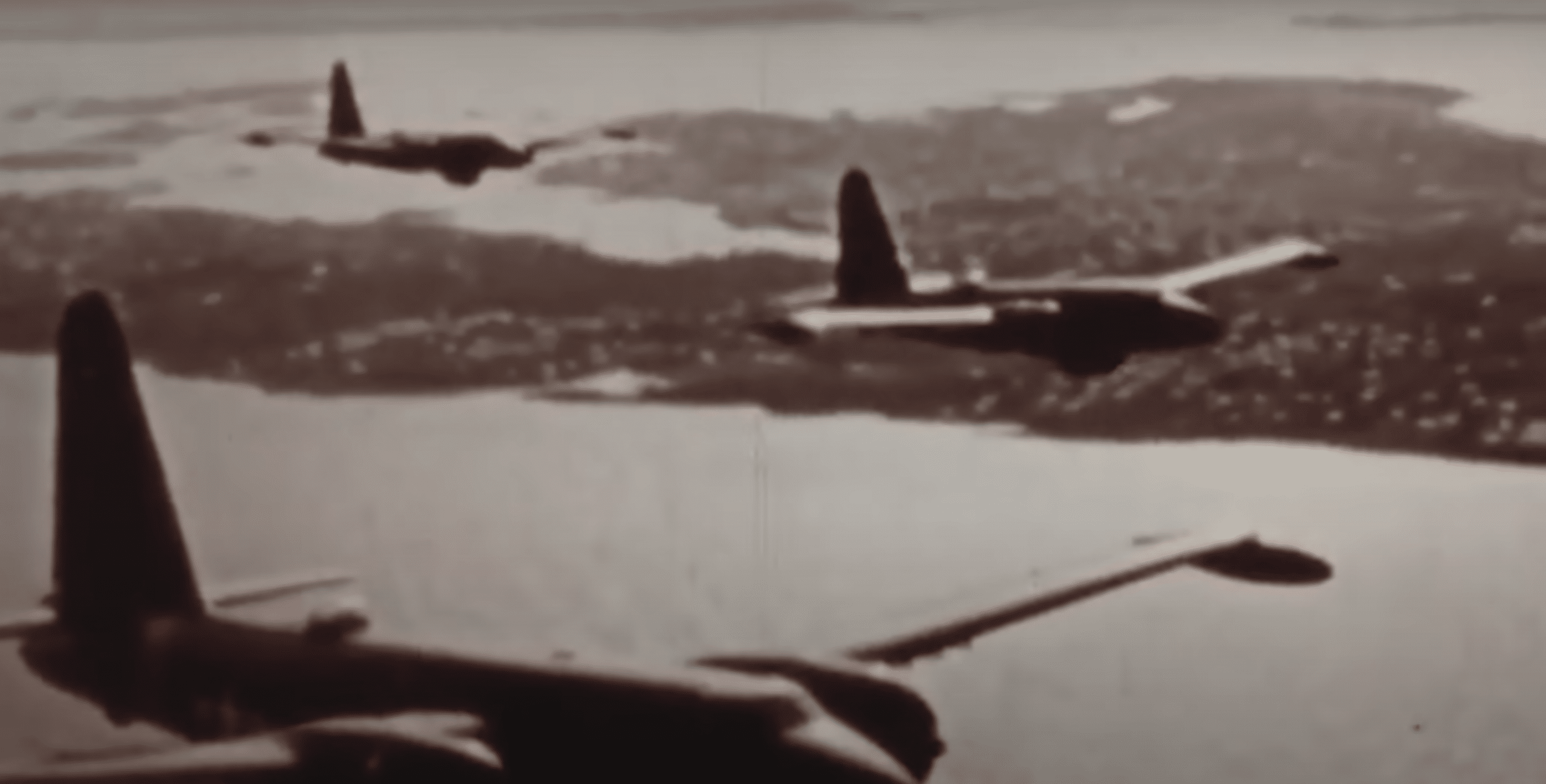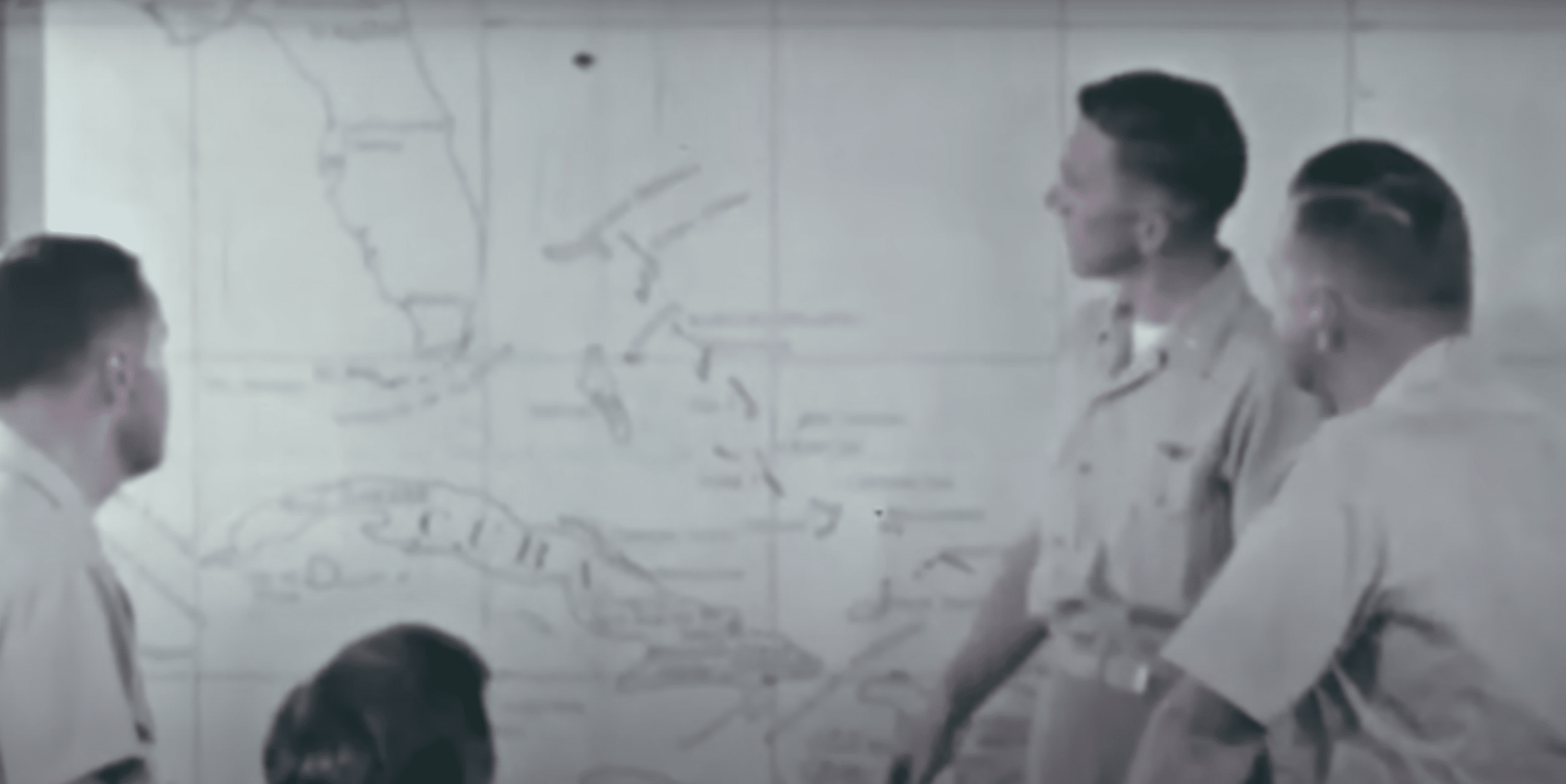
YouTube / Dark Skies
Lockheed began designing a new twin-engined, land-based patrol bomber in early 1941.
The aircraft, known as Model 26, was expected to use the Wright R-3350 Cyclone engine in order to carry significant amounts of bombs for longer distances. However, the project wasn’t the top priority and so its engines were eventually used for another project: the B-29 Superfortress.

Years later, in 1944, the project was given a second chance, and the US Navy ordered 15 models of the Lockheed P-2V Neptune – the only American-made naval/land-based patrol aircraft ever designed for this purpose only.
The Neptune was a huge bomber, featuring a wingspan of 103 ft, a height of 29 ft, and an empty weight of 50,000 lbs. Aside from its cannons and heavy caliber machine guns, the bomber could also carry torpedoes, mines, bombs, and even high-explosive rockets.
As a maritime patrol and anti-submarine warfare aircraft, the Neptune had impressive endurance and range, a large internal weapons bay, defensive capabilities, and solid short-field capabilities.
The model first saw combat during the Vietnam War, deployed in roles such as: ground attack, day/night bombing and rocket attack, and armored combat transport missions. It was also used for electronic warfare and all-weather interdiction missions day and night.

The 1st Radio Research Company also used the bomber to intercept low-powered tactical voice and morse code radio signals. But it was with the seaboarne branch that the Lockheed P-2 Neptune really excelled at.
Unsatisfied with the bombing campaign against North Vietnam, Defense Secretary Robert McNamara established “Igloo White”, a covert joint military electronic warfare operation.
Using darkness and the dense jungles of Vietnam, North Vietnamese trucks often carried critical supplies down the Ho Chi Minh Trail without being detected.

The plan was to use dropped microphones and seismographic sensors to gain intelligence on the enemy’s trail to plan for airstrikes.
The US Navy established the Observation Squadron 67 in February of 1967, based at the Nakhon Phanom Royal Thai Air Force Base. Despite its name, the squadron was never really an observation unit and was instead flying the heavily-modified OP-2E Neptune equipped with M-60 machine guns, an armored undercarriage, and sporting a jungle green paint scheme to blend with the environment.
The mission was simple: take off from the base, fly a short distance into Laos, and drop air-delivered seismic intrusion detectors and acoustic seismic intrusion detectors along the trail to detect enemy movements.
While the service prepared for a 70% loss rate, the brave men from VO-67 exceeded all expectations. Still, tragedy struck when 20 men from three crews lost their lives in three separate incidents within six weeks in 1968.

Despite these losses, the squadron was able to fly combat missions for nine months with only a 25% loss rate before being disbanded in July 1968.
40 years after their actions, VO-67 was awarded the Presidential Unit Citation in 2008.